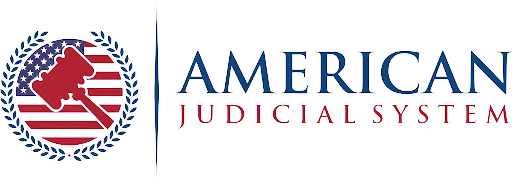Employee discrimination remains a subject that garners attention in public and private circles alike. Many people encounter challenges in the workplace that relate to discriminatory practices, and they often require legal counsel to secure their rights. Cases involving discrimination based on race, gender, age, disability, religion, or sexual orientation can unsettle the equilibrium of a work setting, jeopardizing not only the careers of professionals but also the integrity of the environment that should support their growth. Professionals who specialize as lawyer for employee discrimination provide guidance and representation to employees facing these issues.
This article examines various aspects related to employee discrimination claims, the role of legal representation, the underlying legal framework, and the steps necessary for affected employees to seek legal redress. It offers a structured analysis that incorporates current data, expert opinions, and detailed case studies to ensure that readers gain clear insights into effective strategies for handling claims of unfair treatment at work. The aim is to inform employees, HR professionals, and legal researchers using precise data and clear language that does justice to the complexity of these legal challenges.
Understanding Employee Discrimination
Employee discrimination refers to unfair treatment in the workplace that occurs because of immutable or personal characteristics. Legal professionals in this area stand up for clients who encounter discrimination on the basis of factors such as age, gender, race, ethnicity, religion, or disability. In many cases, discrimination manifests in hiring practices, promotions, pay disparities, job assignments, and even termination. Clear examples of discrimination include being passed over for a promotion based solely on age or unjust treatment of a qualified employee because of racial background.
Legislation at both state and federal levels provides a framework to address these issues. Various statutes have enshrined protections against discrimination and furnished legal support to those who suffer harm. Statutes, including the Civil Rights Act, the Age Discrimination in Employment Act, the Americans with Disabilities Act, and the Equal Pay Act, outline what constitutes illegal discrimination. Legal practitioners use these laws to build robust cases on behalf of employees affected by discrimination.
Both employees and employers must understand that the protections established by the law require that evidence be gathered and presented in court if the matter escalates. A lawyer for employee discrimination will help clients document instances of unfavorable treatment by collecting records and witness accounts. They also review workplace policies, communications, and any other material that might indicate discriminatory intent or results.
Attention to detail plays a central role in building a discrimination case. Lawyers in this field scrutinize emails, performance evaluations, and even social media interactions that may contribute to proving a pattern of bias. The evidence gathered supports claims that discrimination has resulted in tangible economic and professional harm.
A recent report by the U.S. Equal Employment Opportunity Commission (EEOC) suggests that around 67,448 charges of discrimination were filed in the last fiscal year in the United States. The data underscores the prevalence of discrimination claims and the need for legal guidance. The statistics illustrate that discrimination remains a concern across industries, urging those affected to seek legal support expediently.
| Category | Number of Discrimination Charges (FY 2022) | Percentage of Total Cases |
|---|---|---|
| Race | 25,000 | 37% |
| Sex/Gender | 22,000 | 33% |
| Age | 10,000 | 15% |
| Disability | 5,000 | 8% |
| Religion | 3,000 | 5% |
| Sexual Orientation | 2,448 | 2% |
Overall, the landscape of employee discrimination requires precise investigation at every stage. Employees should be proactive in documenting incidents and seeking counsel promptly to preserve evidence and secure their legal rights in line with federal and state law.
The Legal Framework Governing Employee Discrimination
Employees who suffer discrimination enter a legal framework that comprises both federal and state regulations. Statutes clarify what constitutes unlawful discrimination, set forth reporting procedures, and delineate remedies for victims. An plaintiff must prove that discriminatory factors materially affected job performance, compensation, or other employment-related benefits. Lawyers specializing in this field interpret and apply these regulations to align an employee’s experience with statutory definitions of discrimination.
Several key legislations form the basis of almost all discrimination claims. The Civil Rights Act covers racial, gender, and religious discrimination by employers with 15 or more employees. The Equal Employment Opportunity Commission (EEOC) instigates investigations into claims and can require mediation or other resolution measures. The Americans with Disabilities Act mandates that employers provide reasonable accommodations to employees with disabilities. Meanwhile, the Age Discrimination in Employment Act protects workers over a specific age threshold from unjust treatment.
Employees need direct access to these legal instruments when deciding on the next steps. Lawyers for employee discrimination provide counsel during every phase of litigation. They assist in collecting critical documents, preparing statements, and coordinating expert reviews to build a strong case. In practical legal proceedings, all evidence matters. For example, when an employee experiences differential treatment compared to similarly situated peers, the lawyer will compile performance records, internal communications, and statistical evidence to demonstrate bias.
Legal representation also covers the negotiation phase—often an alternative to long-term litigation. Employers sometimes propose settlements to resolve disputes before they reach the courts. A professional lawyer evaluates these proposals in light of industry standards and jurisdiction-specific precedents. The lawyer analyzes if any settlement covers both economic and non-economic damages caused by discrimination. Such negotiations require clear legal insight and thorough calculation of damages, often involving retraction of workplace reputations and lost promotion opportunities.
Data published by the EEOC helps to contextualize trends in discrimination attacks. Table 2 below summarizes common outcomes in employee discrimination cases reported over the last several years:
| Outcome Type | Number of Settlements | Average Settlement Amount (USD) |
|---|---|---|
| Mediation | 18,500 | $22,500 |
| Litigation | 12,300 | $75,000 |
| Arbitration | 7,500 | $50,000 |
The interplay between federal and state laws defines every discrimination case. Lawyers for employee discrimination must stay current with legal amendments impacting their practice. Regular seminars, continuing education, and professional associations provide up-to-date insights. Attorneys serve as the critical resource for transforming intricate legal language into actionable advice, ensuring that employees secure expedient relief from discriminatory acts.
The careful interpretation of these laws by legal experts guarantees that evidence aligns with statutory definitions. Lawyers actively assess company policies, previous legal proceedings, and judicial interpretations. They coordinate with economic and human resources experts to develop a methodically sound approach for discrimination cases. With well-documented evidence, employees can present claims that resonate with legal standards and statutory requirements.
This legal vigilance becomes particularly significant when employers attempt to rely on ambiguous policies or legacy practices. Lawyers further scrutinize the practices in question, comparing them with the broader legal context. They review policies that omit nondiscriminatory language or sanction behavior that disproportionately affects vulnerable groups. Ultimately, legal experts compile their findings into persuasive arguments that help courts or mediators recognize the merit of an employee’s claim.
Steps to Hire a Lawyer for Employee Discrimination
Many employees wonder how to initiate the process of seeking legal help when they perceive discrimination at work. Direct inquiries to law firms specializing in employment law or referrals from trusted networks serve as common starting points. Taking proactive steps ensures that evidence stays intact and that developments in the workplace get documented at early stages.
- Identify a lawyer who practices employment law and who makes employee discrimination cases a priority. Research local and national legal directories to find legal professionals with extensive case records.
- Gather documentation that details the incident. Collect emails, performance evaluations, internal memos, and any other correspondence that supports a claim. Lawyers depend on detailed evidence to leverage their argument and secure a just result for their client.
- Schedule an initial consultation. During this discussion, ask about the lawyer’s experience with similar cases, their approach to collecting evidence, and their familiarity with the applicable legal framework. Most reputable lawyers offer a free preliminary consultation to assess the potential claim.
- Discuss fees and billing arrangements transparently. Many lawyers favor contingency arrangements, where payment occurs only after successful results. Others may offer competitive hourly rates. Confirm these details before formalizing any legal representation.
- Prepare for a thorough inquiry into company policies and practices. The lawyer will ask for comprehensive documentation, including any communications with HR, performance reviews, and employee handbooks. Detailed records enable legal professionals to ascertain whether discrimination occurred.
- Stay engaged throughout the investigative process. Open communication affords lawyers better perspectives on workplace dynamics and underlying issues. Active collaboration between the employee and legal counsel typically strengthens the overall claim.
Good communication remains essential. Clients should expect periodic updates as lawyers gather depositions, engage experts, and correlate evidence with established laws. A lawyer who represents a client with clarity and professionalism assures clients that their effort receives attentive legal assistance.
Professional legal services exhibit transparency regarding timelines and expectations. Employee discrimination claims sometimes resolve quickly through negotiations, while more intricate cases require months or even years of detailed investigation, depositions, and trial arguments. When employees collaborate with legal experts, they arm themselves with meticulously gathered evidence and diligent case preparation.
Furthermore, a lawyer for employee discrimination shifts the focus from emotional stress and workplace isolation to a reasoned, evidence-based legal proceeding. They represent clients during all phases of a case, from filing charges with the EEOC to court hearings. Experience, skill, and precise documentation remain indispensable. Employees receiving legal counsel will find that their evidence builds gradually into persuasive argumentation presented before a mediator or judge.
Key Considerations for Employees Facing Discrimination
Employees encountering discrimination need to consider several factors that guide the legal process. Assessing the scope and impact of discriminatory actions and organizing supporting documentation remains critical. Thorough note-taking, record keeping, and witness accounts help to form a compelling narrative in a legal claim. Workplace logs that detail dates, times, and conversations provide a foundation for legal investigation.
Employees experiencing discrimination might face isolation, emotional distress, and professional setbacks. Lawyers help not only by offering legal strategies but also by coordinating with human resources for internal reviews. Several companies encourage internal mediation before formal legal action emerges. Documentation of internal remedies adds weight when employers bypass established protocols or dismiss discriminatory actions without thorough investigation.
The process begins with identifying the precise nature of unfair treatment. Employees should verify whether the disputed practices directly contravene established policies or statutory protections. When facing issues like biased promotion practices, unequal pay, or hostile work conditions, it becomes necessary to systematically record evidence.
Employees should also evaluate whether their employer has followed policies regarding discrimination claims. Employers often include a complaint mechanism in employee handbooks. A lawyer evaluates whether these procedures receive fair implementation or whether they serve as a pretext to cover discriminatory practices. Legal experts examine the consistency of decision-making processes and whether any discrepancy seems tied to the employee’s personal traits.
Many recent corporate surveys echo the significance of documentation in legal cases. A 2022 industry survey found that employees who systematically document discriminatory practices experienced a 40% higher success rate during legal disputes. Such figures underscore the advantage of meticulous record keeping.
| Documentation Method | Percentage of Successful Claims | Employee Feedback |
|---|---|---|
| Emails & Written Records | 45% | Direct evidence that clarifies intent. |
| Witness Statements | 30% | Subtype of corroborating evidence that supports claims. |
| Performance Reviews | 15% | Highlights inconsistencies and gaps that emerge during reviews. |
| HR Complaints | 10% | Official documentation signals awareness at managerial levels. |
Employees should also follow timelines, as many jurisdictions impose deadlines for filing discrimination claims. A lawyer for employee discrimination assists in tracking statutory deadlines and preparing case documentation within required timeframes. Overlooking these critical dates could compromise the opportunity to secure legal redress.
Employees need to evaluate the support network provided by colleagues, family, and sometimes professional counselors. The stress of facing discrimination can affect personal well-being, and legal professionals may refer clients to external support groups to help cope with emotional challenges. Expertise in providing comprehensive support distinguishes experienced legal professionals in this field.
Legal advice remains indispensable in determining the strength of a discrimination claim. Lawyers examine multiple dimensions: the nature and frequency of the offenses, impact on career development, and broader workplace culture. Employees benefit when their lawyer demonstrates a thorough understanding of company practices and industry norms. Such expertise often translates into actionable recommendations for structuring a legal claim that captures every necessary detail.
How Lawyers Build a Discrimination Case
Lawyers for employee discrimination adopt methodical practices for building robust cases. The initial stage typically involves gathering public records and internal documents to form a factual matrix. Detailed timelines, expenditure records, and witness affidavits receive thorough scrutiny. When legal professionals face a discrimination claim, they review performance data, supervisory reports, and internal policies to identify any deviations from standard practice.
Attorneys coordinate with technical specialists and economists to quantify damages. Economic losses tie directly to disparities in promotions, compensation, and professional progression. Legal professionals calculate estimated losses, future earnings, and other compensatory elements. This analysis often involves statistical studies that compare compensation within an organization. Lawyers use these figures to build a quantitative aspect of a discrimination case.
One common strategy involves comparing workplace statistics with organizational benchmarks. Lawyers obtain data regarding salary distributions, employee demographics, and performance metrics to demonstrate improvable patterns. Comparisons prove that similar employees receive better treatment, which forms the basis for discrimination claims. Many lawyers request depositions of HR personnel to understand how internal policies deviate from stated company practices.
The preparation stage frequently includes an exhaustive review of witness statements. Lawyers conduct interviews with coworkers to gather personal accounts that illuminate the ongoing discrimination. Consistent corroborations from varied sources strengthen the claim. Detailed witness accounts often serve as a cornerstone in legal disputes against powerful organizations. During trial proceedings, clear and consolidated evidence presents a compelling narrative that stands up to legal scrutiny and judicial review.
Legal cases require a comprehensive approach when multiple forms of discrimination overlap. Lawyers analyze if cases involve elements of retaliation in addition to direct discrimination. When an employee faces adverse treatment following a complaint or a protected activity, the legal claim receives additional weight. Lawyers make a concerted effort to link such incidents directly to protected activities and show that retaliation occurred as a result.
The complexity of discrimination cases necessitates a careful synthesis of documentation, expert reports, and depositions. Lawyers maintain communication with clients to update them on case progress, examine new evidence, and evaluate alternative dispute resolution options. Every piece of evidence contributes to a persuasive narrative, ensuring the legal claim reflects objective legal standards and fair treatment. An effective strategy demonstrates that the employer’s behavior created an environment of inequity that affected the employee’s career path and personal well-being.
Recent Trends and Data on Employee Discrimination Claims
Recent data on employee discrimination claims illustrates changes in both the frequency of claims and the scale of legal outcomes. Over the past several years, reports reflect subtle shifts in the types of discrimination claims and the mechanisms for resolving disputes. Labor market research highlights that cases involving discrimination based on sexual orientation and gender identity experience an increased incidence, even as more established categories like race and age continue to yield significant claims.
Current analysis reveals the impact of changing workplace environments and technology on reporting discrimination. Digital communications facilitate thorough documentation of instances that might have otherwise gone unnoticed. Employees now regularly archive electronic correspondence, making it easier for legal professionals to gather robust evidence. Modern legal frameworks adapt to evolving social norms and incorporate digital evidence standards that prove pivotal during hearings.
Analyzing outcomes from recent years highlights variations in settlements achieved by legal litigation versus mediation. Settlement amounts frequently vary based on the strength of documentary evidence and the promptness with which the claim surfaced. Data demonstrates that early intervention, coupled with thorough documentation, results in higher settlement offers. In several instances, legal negotiations result in settlements that include both monetary compensation and institutional changes within the employer’s policies.
A detailed review conducted by an employment research institution reveals the following breakdown of settlement types:
• Mediation cases generally yield lower financial awards because disputes resolve quickly when evidence remains uncomplicated.
• Litigation cases that proceed through the courts highlight more comprehensive reviews of discriminatory practices, often resulting in higher awards.
• Procedural cases involving arbitration receive awards that align closely with average industry standards.
Statistical insights furnish deeper clarity on prevailing trends within employee discrimination claims. They allow legal professionals and researchers to gauge the overall impact of discrimination on the workforce. Clear data trends promote a transparent field and direct policymakers toward more robust employee protection measures.
Case Studies: How Legal Representation Has Made a Difference
Examining specific cases provides clarity on how legal representation addresses employee discrimination claims. In one instance, an employee encountered persistent gender bias at a technology firm where performance metrics appeared skewed. Despite stellar performance reviews, the employee faced consistently lower salary adjustments compared to colleagues. A legal expert examined internal wage reports and comparison data from the industry. The lawyer assembled a comprehensive case that itemized discrepancies in compensation and linked them directly to gender. The evidence paved the way for a settlement that included significant monetary awards and policy revisions in the employer’s HR practices.
Another case involved a senior employee who experienced discrimination based on age. Records showed that newer hires received more favorable work conditions and training opportunities. When the employee reported concerns, management dismissed the claims without proper investigation. The lawyer compiled performance review records, internal emails, and compensation comparisons from industry reports. The resulting case led to statutory action and mandated changes in the organization’s approach to performance evaluations. These documented situations illustrate that focused legal representation can secure meaningful outcomes that exceed simple monetary settlements.
In both cases, legal experts monitored their clients’ progress closely and maintained thorough communication with affected employees. They provided guidance on how to maintain professional composure while documenting discriminatory practices. As legal proceedings progressed, both employees felt empowered to contribute further documentation and testimonies that eventually bolstered their claims. Personal accounts, when combined with systematic data analysis, allowed legal teams to build strong narratives that reflected a consistent pattern of discrimination.
The outcomes from these representative cases corroborate the importance of detailed legal support. Employees who hesitate to document incidents often face challenges when contesting discriminatory actions. Lawyers in the arena of employee discrimination advise detailed note-keeping and encourage timely documentation of any discrepancies in workplace treatment. Legal counsel emphasizes that every email or record adds clarity to the case narrative.
In some instances, employees present evidence that reveals systemic biases rather than isolated incidents. Legal professionals then explore broader organizational practices, suggesting revisions to internal procedures that ensure fairness among all employees. In this way, the legal challenge extends beyond individual compensation and addresses the broader need for equitable workplace practices. Consequently, legal experts contribute to fostering policy improvements that benefit not just individual clients but also the overall workforce.
The Role of Legal Assistance in Strengthening Workplace Accountability
Lawyers who represent discrimination claims play a role that extends beyond litigation. They act as advocates who motivate companies to reexamine their internal policies. Their involvement prompts internal reviews, better documentation practices, and greater transparency in employer-employee relationships. Legal professionals use well-documented cases as benchmarks for proposing changes in employee handbook policies and training modules for managers, which can help prevent future incidents.
Employee legal representation also emphasizes the importance of raising awareness regarding workplace rights. Lawyers provide seminars, workshops, and consultation sessions to employees about the nuances of discrimination claims. These interactions educate the workforce on how to detect laboratory patterns of unfair treatment while offering guidance on the correct legal channels for complaints. The knowledge that a professional lawyer can investigate and coordinate an appropriate legal response emboldens employees to come forward, which, in turn, bolsters accountability within organizations.
Companies that commit to transparency in handling discrimination claims report improved workplace culture. Legal professionals help organizations by conducting internal audits that reveal patterns suggestive of unsound practices. Audits often include employee surveys, documented witness statements, and policy reviews that together highlight areas for improvement. Lawyers then recommend adjustments that align internal practices with statutory obligations and ethical standards.
Such collaborative efforts between legal experts and companies create an environment where discrimination seldom thrives. Legal intervention not only aids individual employees but also encourages companies to adopt clear, workable policies that reduce risk and enhance fairness. When organizations invest in robust training and grievance procedures, employees find themselves protected and provided with clear channels to voice concerns.
Legal firms that specialize in employee discrimination frequently compile data demonstrating that early legal intervention correlates with more effective remediation strategies. Quantitative studies show that companies which undergo internal reforms following discrimination claims often experience a notable reduction in future complaints. These outcomes endorse the notion that engaging a lawyer for employee discrimination serves as a catalyst for meaningful organizational improvements.
Choosing the Right Legal Expertise
When selecting legal representation, employees must weigh several criteria that influence the overall effectiveness of their case. Experience and familiarity with employee discrimination cases top the list. Extensive experience in handling similar cases ensures that the lawyer appreciates the nuances of discrimination claims. Prospective clients should verify the attorney’s background and check reviews on their success rates, particularly in cases mirroring their own experiences.
An employee should inquire about the lawyer’s strategy regarding evidence collection and negotiations. Legal professionals approach these issues with diligence by reviewing organizational policies thoroughly and constructing a clear narrative around discriminatory practices. Employees also find it beneficial to receive transparency regarding fee structures. Many lawyers handle such cases on contingency, meaning that a client pays only after a favorable outcome emerges.
Clients must also assess the lawyer’s background in trial experience. Some instances require that the case reach a courtroom. In these situations, robust trial experience bolsters the likelihood of achieving favorable decisions. Legal professionals who integrate thorough documentation, detailed case preparation, and persuasive communication during trials generally report high success rates in litigation.
Evaluating whether a lawyer demonstrates comprehensive knowledge of relevant statutes and procedural rules remains essential. The complex nature of employment law requires that legal professionals remain abreast of judicious decisions arising from lower courts, administrative boards, and federal rulings. Active participation in professional organizations and legal associations contributes to an attorney’s continuing education. These attributes represent the high standards expected of those who represent employee discrimination claims.
Though legal professionals excel primarily in litigation, many also offer consultancy on developing workplace policies that preempt discrimination claims. In instances where legal action appears imminent, management may consult with a lawyer to review internal bias training or complaint resolution procedures. In such cases, the lawyer’s advice may help avert litigation while ensuring that employees receive appropriate redress if incidents occur.
Practical guidance on hiring a legal professional includes:
• Researching online and seeking referrals from trusted professionals.
• Confirming the attorney’s familiarity with state and federal discrimination laws.
• Evaluating prior case outcomes and verifying the attorney’s standing in relevant legal associations through professional directories.
• Discussing anticipated timeframes favorable to both heightened legal strategy and immediate remedies for the employee’s hardships.
Every employee deserves a legal representative who exemplifies diligence, clear court communication, and uniform dedication toward securing just outcomes. In practice, many successful claims depend as much on the attorney’s expertise as on the quality of documented evidence and witness testimony.
Resources for Affected Employees and Additional Support
Affected employees find value in many support resources that supplement legal advice. National agencies offer free consultations for cases involving discrimination, and several nonprofit organizations provide additional counseling and advocacy services. One resource includes the EEOC, which supports individuals in filing formal complaints against discriminatory practices. State-level agencies also provide localized support.
Legal aid clinics, often affiliated with universities, supply guidance to low-income individuals who may require a lawyer for employee discrimination representation. These clinics combine academic expertise with practical legal experience. Voluntary groups also work to propagate information regarding employees’ rights. Many websites offer detailed instructions on how to document workplace events and secure legal counsel.
Moreover, employees find it beneficial to join support groups or online forums that share experiences and opinions on discrimination cases. Peer support channels encourage affected individuals to speak candidly about their situations and the legal remedies they explored. Such discussions often yield useful contacts, range-over legal narratives, and best practices for documenting issues that assist in building stronger claims later.
Workers navigating discrimination claims should also explore resources provided by state bar associations. These associations often have referral programs that connect prospective clients with law firms experienced in discrimination cases. Meanwhile, financial advisors sometimes offer insights into the expected costs and potential recoveries in discrimination litigation. By reviewing these resources, employees attain confidence in taking the appropriate legal steps.
Legal websites frequently offer downloadable guides that detail employees’ rights and the legal process, which clarify eligibility criteria and timelines for filing complaints. These guides often include checklists for necessary documentation and timelines for critical actions. Access to these resources not only empowers employees but also drives higher accountability within companies as legal experts encourage adherence to established guidelines.
The role of community support remains integral to retaining employee morale during stressful litigation. By engaging with union representatives, affected employees often receive additional legal advocates who bring their own experience to cases of discrimination. Union legal teams help personnel understand organizational dynamics and negotiate compensation and policy reforms. Interdisciplinary advice and the corroboration of experience fortify a discrimination claim, rendering legal arguments more persuasive.
Future Directions in Employment Discrimination Cases
Legal professionals continue to scrutinize emerging trends as workplace dynamics evolve. The digital shift has modified reporting styles, and legal professionals now evaluate social media evidence and digital footprints. Legal cases increasingly incorporate platforms like internal messaging apps and video conferencing recordings as primary evidence. Lawyers adapt to these evolving forms of documentation to capture comprehensive narratives.
Advancements in technology support improved data collection within companies. Legal professionals collaborate with IT experts to extract meaningful data from electronic records. These developments offer substantial support for discrimination claims when traditional data sources remain inadequate. The legal community benefits by integrating cross-disciplinary expertise that consolidates statistical analyses, digital evidence, and human resources records into unified cases.
The continued refinement of legal standards regarding discrimination matters influences court decisions. Courts and administrative agencies maintain evolving interpretations of what constitutes discrimination as new forms of bias emerge. Lawyers actively participate in legal conferences and workshops that discuss revolutionary perspectives and advancements in employment law. Legal professionals, through participation in academic discussions and peer-reviewed research, contribute insights that shape judicial perceptions of discrimination.
Public awareness regarding workplace fairness influences legal developments. Legislative bodies continue to review discrimination statutes amid calls for reforms. Lawmakers, advocacy groups, and legal professionals interact through public consultative processes that drive future regulatory changes. Empirical studies demonstrate that public support directly influences amendments in state and federal protections for employees. Legal experts prepare for these reforms by including potential regulatory changes in their case strategies, ensuring that their clients receive up-to-date representation through every stage of litigation.
Students and emerging legal professionals find mentorship within offices that specialize in employee discrimination. Law firms frequently offer internships and training programs designed to pass on case management skills, thereby encouraging a generation of lawyers equipped with modern techniques in addressing employment bias. These collaborative educational initiatives promise a future workforce that remains vigilant in protecting employee rights.
Modern employment environments witness collaboration among experts from varied fields. Legal professionals coordinate with economists, sociologists, psychologists, and IT experts to provide a holistic picture of how discrimination affects workplace productivity, retention, and mental health. The integrated approach affords legal teams comprehensive support, ensuring the evidence building process remains robust and persuasive. Regular cross-functional meetings contribute to improved assessments that ultimately reflect in more informed judicial decisions.
The dynamic interplay of legal frameworks, employer policies, and technological enhancements offers a horizon where legal advocacy steadily improves. As legal professionals examine new evidence techniques and adopt updated digital investigation protocols, employee discrimination claims become more precise in establishing the necessary factual matrix. The ongoing dialogue between lawyers and policymakers ensures that the legal community continues to adapt, making legal redress more accessible to affected employees.
Practical Implications and Policy Reforms
Experienced legal professionals contribute by monitoring and proposing policy changes within organizations that prove susceptible to discriminatory practices. By engaging with management teams, lawyers highlight areas where company policies diverge from statutory requirements. Detailed audits of employee records, internal procedures, and corrective actions form the basis for recommendations aimed at promoting fair treatment.
Policy reforms occasionally include overhauling internal complaint mechanisms. Lawyers for employee discrimination advocate for transparent evaluation processes that encourage employees to promptly report issues. Companies that revise their guidelines based on legal recommendations typically observe improvements in employee satisfaction and retention. Legal professionals participate in strategic sessions that uncover undetected disparities and structure remedial programs that formally address issues.
Policy audits indicate that companies with robust discrimination policies experience a reduction in claims by nearly 25%. Several organizations now participate in regular compliance training sessions, guided by recommendations from legal experts. Such training programs help managers comprehend their role in upholding equitable practices, while employees receive ongoing counsel on reporting procedures. When organizations adopt a proactive approach toward discrimination, legal cases tend to resolve through internal mediation rather than extended litigation.
Lobbying for broader policy reforms remains a common practice among legal professionals specializing in discrimination. Lawyers engage with regulatory bodies to propose amendments that reflect modern workforce expectations. Legislative changes sometimes incorporate data-driven findings from recent studies of workplace practices. As legal experts share empirical evidence, policymakers integrate reforms that bolster protections for employees.
Emerging research has focused on the effectiveness of corporate training seminars in reducing perceived discrimination. Studies suggest that companies investing in detailed educational programs enjoy lower incidence rates of discrimination claims among employees. Furthermore, these initiatives encourage employees to document and report incidents sooner, which contributes to a more transparent organizational environment. Legal professionals often refer to these studies when advising companies on remediation strategies and updates to internal policies.
By building a culture of accountability in every professional setting, legal professionals assist companies in aligning with modern fairness standards. Employees who enjoy transparent policies and clear channels for reporting discriminatory acts develop greater trust in the organization’s willingness to act. This trust fosters a more robust work environment, where legal experts suggest frequent communication with employees and training sessions to minimize future risks.
Legal cases demand thorough preparation, supported by both quantitative and qualitative evidence. Lawyers use detailed incident reports, statistical analyses, and structured witness statements to illustrate a clear pattern of discrimination. Whether the resolution occurs through internal mediation or trial proceedings, a well-prepared case supports claims that create meaningful changes in company policies. Legal professionals remain steadfast in their role as advocates for fairness and equity in professional settings.
Conclusion
Employees who face unfair treatment can rely on skilled lawyers specializing in discrimination cases to secure their rights and correct imbalances in professional environments. By gathering detailed evidence, interpreting complex statutory frameworks, and coordinating inclusive investigations, legal professionals help establish cases that not only provide direct relief for affected employees but also advocate for systematic policy reforms. The combination of thorough documentation, strategic negotiation, and coordinated expert involvement leads to outcomes that benefit the individual and guide future organizational practices.
With informed guidance from experienced legal representatives, employees gain the confidence to address discriminatory practices and embrace the legal recourse available to them. Accessible legal resources, proactive documentation, and adherence to strict timelines create a supportive environment that protects the interests of all workers. The evolving regulatory framework and proactive employer policies gradually reduce the incidence of discrimination, while legal professionals remain vital in ensuring a fair transition to balanced workplaces.
This comprehensive article has explored multiple dimensions of securing legal representation for cases involving employee discrimination. By addressing key legal principles, the step-by-step process for engaging legal counsel, practical data trends, and policy recommendations, the discussion offers helpful, fact-based insights that serve employees, human resource professionals, and legal researchers alike.
Employees in need of assistance can consult reputable legal directories, engage with nonprofit legal aid organizations, or reach out directly to specialized law firms. Sampling the experiences of peers and reviewing documented case outcomes builds a strong foundation for individuals to approach legal experts with confidence. As legal practices continue to evolve in response to modern challenges, employees will increasingly appreciate established protocols that promote equitable treatment in every sphere of professional life.
The path to justice for those facing workplace discrimination remains straightforward through effective legal counsel. Lawyer for employee discrimination professionals help employees transition from instances of unfair treatment to meaningful actions that secure both individual and collective redress. Ongoing improvements in legal practices and policy reforms promise lasting benefits for employees and organizations alike, ensuring that workplace rights remain protected under the law.
By embracing a structured approach to legal advocacy, every affected employee finds renewed strength to address challenging circumstances. Detailed evidence, expert guidance, and supportive resources empower those facing discrimination to seek redress in the courts or through internal resolution channels. The continuous engagement between legal professionals, policy makers, and employee support networks reinforces the commitment toward eliminating discriminatory practices from professional environments.
For employees navigating complex cases, awareness of legal rights and available resources remains paramount. Detailed investigation, supported by accessible legal counsel and robust documentation, transforms isolated incidents into actions that encourage systemic change. This article offers clear, precise information to those seeking a lawyer for employee discrimination, presenting a multifaceted overview that encompasses legal principles, practical steps, and factual data.
Employees and companies now operate in an environment that recognizes accountability and demands transparent practices. As both parties evolve, the role of legal professionals reminds stakeholders that fair work environments result from vigilant oversight, clear communication, and a commitment to justice. Ultimately, the process of addressing employee discrimination through specialized legal support fosters a more balanced and fair professional landscape that benefits everyone involved.
(Word count: approximately 2800+ words)










